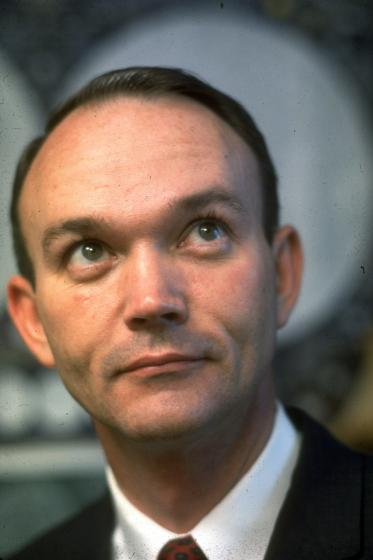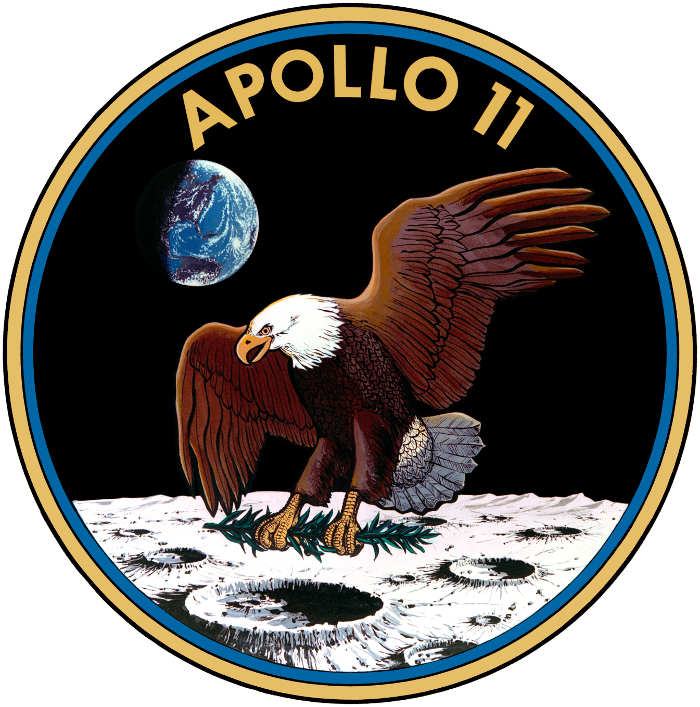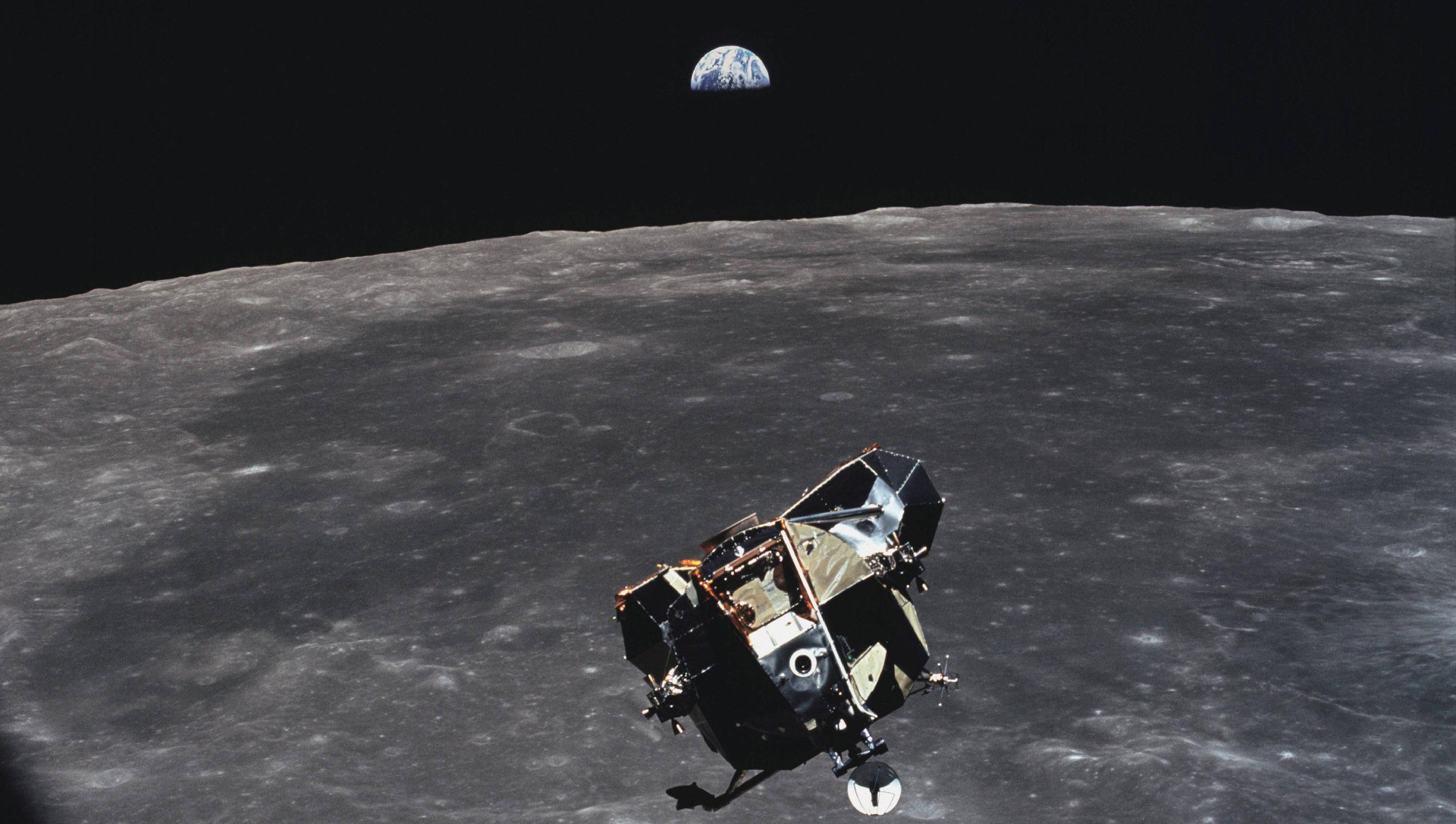
While the first human beings set foot upon the surface of the moon, there was someone watching them from 110 kilometers above: Michael Collins.
The spacecraft that NASA used to land on the moon had two main components: the command module and the landing module. Buzz Aldrin and Niel Armstrong descended to the surface of the moon in the lander, while Collins remained in orbit around the moon in the command ship. This was done so Collins could coordinate things like radio communication and rendezvous with Armstrong and Aldrin when they returned from the surface. Click here for a short summary of the mission and how this all worked.
After the lander separated from the command module, Collins snapped the above photograph. As the caption states, the lander module, Earth, and its moon are all in the frame. The only living person not in the frame of the photograph is Michael Collins. At the time, it was the biggest group photo ever taken. If selfies had been invented, Collins could have been in it too, and the entire human race would have been included.
While Niel Armstrong and Buzz Aldrin were on the surface of the moon, Collins remained behind in the command module. It is estimated that when he was on the opposite side of the moon from the landing site, he became the most solitary person to ever have existed--farther away from any other person than anyone had ever been before. However, he has stated that he did not feel lonely during that time. Instead, he felt connected to his crew mates on the surface, awareness of the importance of the mission, and even elation. You can read more about that here.
 Collins is also known for designing the famous mission patch. Fellow astronaut Jim Lovell suggested the idea of using an Eagle to represent the United States; a computer expert working in the training simulators suggested using an olive branch as a symbol of peace. Collins traced an image of an eagle from a National Geographic photograph. He initially put the olive branch in the eagle's beak. However, NASA told him the talons looked too warlike. He did a redraw and moved the branch so it was being held in the eagle's claws. Collins and his crewmates included many symbols and sentiments of peace and unity in the mission. From Niel Armstrong's famous "...giant leap for mankind," to the mission patch designed by Collins, it seems the crew saw this as an accomplishment dedicated to all human beings.
Collins is also known for designing the famous mission patch. Fellow astronaut Jim Lovell suggested the idea of using an Eagle to represent the United States; a computer expert working in the training simulators suggested using an olive branch as a symbol of peace. Collins traced an image of an eagle from a National Geographic photograph. He initially put the olive branch in the eagle's beak. However, NASA told him the talons looked too warlike. He did a redraw and moved the branch so it was being held in the eagle's claws. Collins and his crewmates included many symbols and sentiments of peace and unity in the mission. From Niel Armstrong's famous "...giant leap for mankind," to the mission patch designed by Collins, it seems the crew saw this as an accomplishment dedicated to all human beings.
After his time at NASA, Collins became the director of the National Air and Space Museum in Washington DC, then the undersecretary of the Smithsonian Institution. He also went on to write Carrying the Fire: An Astronaut's Journeys, which has been described as "the best account of what it is like to be an astronaut." He also had a cameo role in the 2010 Michael Cera comedy, Youth In Revolt.
Far from feeling lonely or abandoned, I feel very much a part of what is taking place on the lunar surface ... I don't mean to deny a feeling of solitude. It is there, reinforced by the fact that radio contact with the Earth abruptly cuts off at the instant I disappear behind the moon. I am alone now, truly alone, and absolutely isolated from any known life. I am it. If a count were taken, the score would be three billion plus two over on the other side of the moon, and one plus God knows what on this side. - Michael Collins, speaking into a tape recorder while on the other side of the moon
